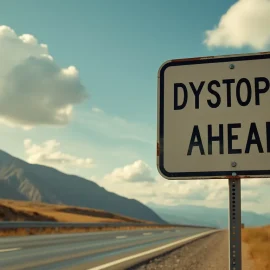

This article is an excerpt from the Shortform book guide to "Development as Freedom" by Amartya Sen. Shortform has the world's best summaries and analyses of books you should be reading.
Like this article? Sign up for a free trial here .
What was the Great Famine? What could have prevented the Irish potato famine?
Between 1845 and 1849, Ireland experienced mass starvation and disease after most potato crops got infected. Amartya Sen uses the example of England’s lack of support during the potato famine to demonstrate how easy it is to prevent famines.
Keep reading to learn what could have prevented the potato famine and how famines can be prevented today.
Famine and Alienation
In Development as Freedom, Sen argues that when the government is alienated from the people it serves, this can lead to (or exacerbate) famine because the government isn’t as likely to intervene on their behalf. The Irish Potato Famine serves as an illustration.
Case Study: The Irish Potato Famine
What could have prevented the Irish potato famine? Sen says the Irish Potato Famine could have been prevented through British intervention, but a British sense of superiority led them to neglect the Irish people.
The famine decimated Ireland in the 1840s when food production fell dramatically because of a potato blight. Despite widespread hunger, Ireland continued to export food. Market forces directed much of the available food in Ireland to where it could be purchased at the highest price: in this case, England, which was relatively richer.
Why Didn’t England Intervene?
When the famine occurred, Ireland was still part of the British Empire. While mainland Britain had social safety nets in place that assisted the unemployed (known as the Poor Laws), Ireland’s version of these programs was watered-down and did little to help.
Sen says this unequal treatment stemmed from British disdain for Ireland. Many in Britain attributed poverty in Ireland to laziness and incompetence. British officials also blamed the Irish for their overdependence on potatoes as a staple crop. This kind of “blaming the victim” is common when famines occur in colonized areas, such as India under British rule. Such a posture prevents governments from taking decisive action to relieve the suffering of their subjects.
Legacy of the Great Famine
The potato famine that struck Ireland from 1846 to 1851 has had lasting implications on its demographics and culture.
Before the famine, Ireland had a population of around 8 million. Because of the widespread suffering and emigration the famine caused, by 1911 its population dropped to 4.4 million. Even today, Ireland’s population has yet to reach its pre-famine levels. Most of those who left Ireland came to the US, which now has around 32 million people who identify as having Irish heritage.
This emigration caused a cultural consequence as well: At the time of the famine, about half of the Irish population spoke Gaelic. By 1891, there were fewer than 700,000 Gaelic speakers in Ireland, as English became the predominant language.
Preventing Famines
Now that you know what could have specifically prevented the potato famine, Sen identifies three keys to preventing famines now: private markets, free trade, and government support.
- Private markets provide incentives for people to produce and distribute food.
- Free trade allows people to convert their labor power into food.
- Government support enables famines to be avoided by offering supplemental assistance when there is a recession, natural disaster, or price shocks.
Sen also says it’s not difficult or expensive for governments to prevent famines, and he identifies three ways societies can guard against them.
First, if a famine affects 10% of the population (which would be very high), it would take only around 3% of the Gross Domestic Product (GDP) for the government to supplement the full incomes of the people affected. Even in the Indian famine of 1344-1345, the emperor was able to successfully implement a famine relief program by replacing incomes.
Second, overall economic growth is a much better way to prevent famines than increased food production. Japan, South Korea, and Singapore all experienced substantial drops in per-person food production as their economies grew and switched to manufacturing, yet their populations remained well-fed, as they could afford to import food. Also, if the food supply dwindles too much, rich nations with strong industrial bases can import food to compensate for the relative reduction in their agricultural sector.
Third, no famine has occurred in a functioning democracy. Democracy provides an incentive for government officials to take the steps necessary to alleviate food shortages.
Sen blames government mismanagement for the Chinese famine that occurred during the Great Leap Forward of 1958-1961, in which around 30 million suffered from starvation and related illnesses. Sen argues that the widespread mismanagement that caused the suffering simply wouldn’t have been tolerated in a democracy. Democracy makes people aware of the extent of the damage (through a free press) and gives the people a means for addressing it (through elections).

———End of Preview———
Like what you just read? Read the rest of the world's best book summary and analysis of Amartya Sen's "Development as Freedom" at Shortform .
Here's what you'll find in our full Development as Freedom summary :
- The five types of freedom that are integral to economic development
- How democracy can prevent famine
- How empowering women helps communities






